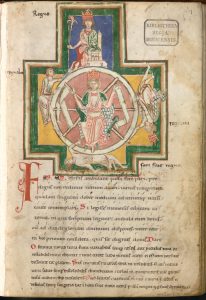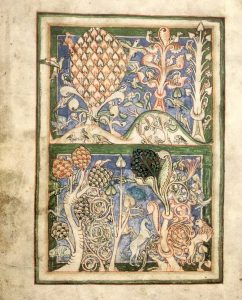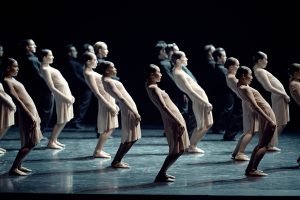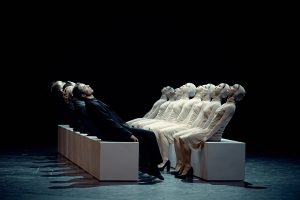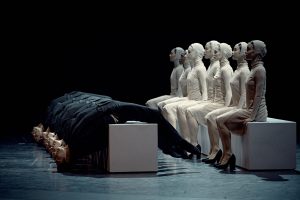A contemporary and refreshing approach to the iconic ballet
The first time I heard Carl Orff’s interpretation of the medieval manuscript, Carmina Burana, was on the soundtrack of Oliver Stone’s 1991 film The Doors. My best friend and I were creating the Blink-182 logo with Hama beads, small hollow colourful cylinders that could be used to create designs on plastic plates covered in little pegs. The design would then be ironed, buffered by parchment paper, leaving it solidified. Before ironing, the design is quite delicate and any movement can cause pieces to fall out of place.
The Blink-182 logo was quite a difficult project, with its arrows and paint splatters, but we were ambitious. The moment we picked up the plate, that very intense part of O Fortuna came on and we quickly, but carefully, returned the plate to the floor before we buckled down laughing ourselves to tears.
O Fortuna is incredibly triumphant and epic. So very different than our childish crafting.
Outside of The Doors’ soundtrack, I wasn’t aware of Carmina Burana, even less so of the incredible power the verses carried.
“Carmina Burana” is latin for “songs from Benediktbeuern,” Benediktbeuern being a district in Bavaria, southern Germany. The original document is a collection of 254 medieval poems which was found in a monastery in Benediktbeuern, dating back sometime between the 11th and 13th centuries. In 1936, 24 of the 254 poems were reinterpreted as cantatas by german composer Carl Orff. These verses have since been performed in orchestras and ballets internationally.
This October, Les Grands Ballets de Montreal presents 150 artists (dancers, musicians, chorists and vocalists) to bring Carmina Burana and Stabat Mater to life once more, choreographed by Romania’s Edward Clug.
Stabat Mater , a 13th-century Italian-Christian hymn, opened the performance on Oct. 3. Forty dancers walked slowly onto the stage, 20 women and 20 men in matching uniforms. The men wore black shirts and pants, and the women wore beigey-pink long sleeve dresses. The fabric was light and emphasised their movements. I was immediately reminded of The Handmaid’s Tale, the young daughters wearing their pink spring dresses and the dark Angels and Eyes opposing them. Stabat Mater rejoices the Virgin Mary, recounting her suffering upon Jesus’ crucifixion.
Their first movements were almost silly, exaggerated head tilts while in deep, strong squats, stiff, total vibrations of their bodies. The two groups moved in conversation with each other, as if arguing. Mimicking each others’ movements in response.
I had expected something different from a ballet, not traditional organza tutus, but graceful, soaring leaps and strong men holding equally strong, but delicate women.
Clug’s choreography was so contemporary, so refreshing. Maybe I could move that way if I wanted to. Their movements were performative versions of rather relatable action; sharing an oversized jacket with someone larger than you, lying on your partner’s stomach, trying to melt your body into theirs, waiting in line.
In one moment, so much movement and noise would be happening on stage, and the next, complete silence, low chorus, each dancer frozen but a few. The others would fade out, and the story would continue, focusing on a new couple’s journey.
Orff’s cantatas, selected to represent quarters of the original manuscript, recite tales of romance, morality, spirituality and pleasure. Clug outlined an imaginary village, telling the stories of its occupants, stories of birth, love, loss and moving on.
In one memorable scene, the men and women were lined up on opposite ends of the stage. The men would fall slowly, drunkenly, and the women would chase across to lift them back to their feet. They did this in pairs, then all at once. Jetting across in their striking outfits, they had added thick black pumps and headwraps that matched their dresses.
The second half began with O Fortuna. I expected chaos, but there was none. Instead, there was an incredible synchronicity. The dancers were now wearing red and black ombre dresses and footed leggings, the costumes worn by women faded black to red and men wore the opposite. Over time, they removed their layers, their bodies glistening as if nude. The group moved with power. Supporting each other as one organism, it was mind-numbing and awakening at the same time.
Carmina Burana will be performed at Place des Arts until Oct. 19, tickets are 40 per cent off for youth under 30 all season long.
With files from Les Grands Ballets de Montreal and the public domain.

